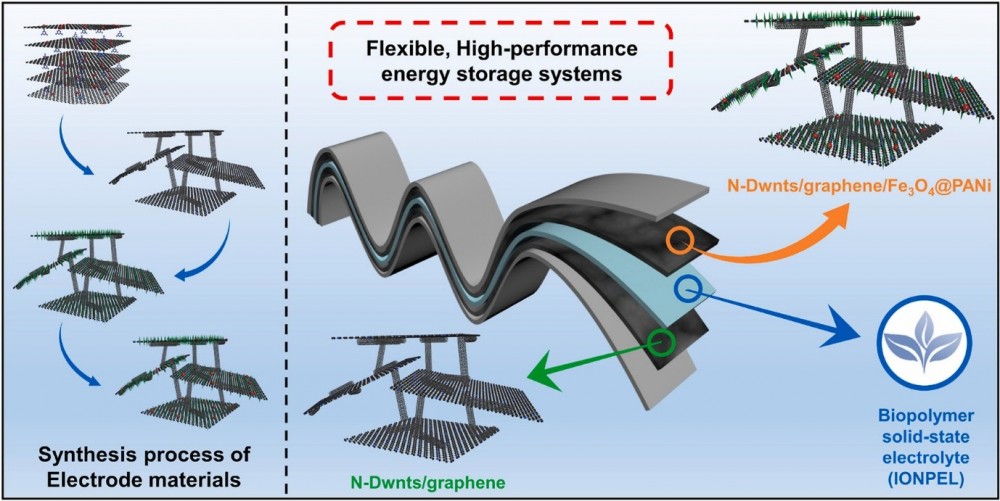
연구
Research Outcome
미래를 창조하는 포스텍 화학공학과
N-doped Carbon Nanotube-Graphene Nanoarchitecture Electrodes with Solid-state Biopolymer Electrolyte for High Performance Flexible Supercapacitors
- Title of paper
- N-doped Carbon Nanotube-Graphene Nanoarchitecture Electrodes with Solid-state Biopolymer Electrolyte for High Performance Flexible Supercapacitors
- Author
- [김원배 교수님 연구실] 차세대 고성능 플렉서블 슈퍼커패시터 구현을 위한 나노카본-바이오 폴리머 복합 전극 및 전해질 시스템 기술
- Publication in journal
- Carbon
- Publication date
- 20250622
[Abstract]
Graphene–carbon nanotube composites often suffer from complex synthesis, low yield, and weak interfacial contact, limiting their electrochemical performance. Similarly, polymer-based solid electrolytes exhibit low ionic conductivity and mechanical strength. To overcome these issues, in this study, a cost-effective, scalable single-step CVD process was developed to interconnect 1D double-walled carbon nanotubes (DWNTs) with 2D nitrogen-doped graphene nanosheets, achieving a high yield of 95.4 %. The resulting N-DWNTs/graphene hybrid electrode exhibits high conductivity and a specific capacitance of 697.8 F/g at 2 A/g and 589 F/g at 50 A/g. A solid electrolyte was also designed using a 95 % [BMIM][TFSI] ionic liquid incorporated into a methylcellulose–starch biopolymer blend, offering high ionic conductivity, mechanical stability, and broad operating voltage and temperature ranges. The assembled flexible asymmetric supercapacitor, combining N-DWNTs/graphene as the negative electrode and N-DWNTs/graphene/Fe3O4@PANi as the positive electrode, delivers an energy density of 187.8 Wh/kg, a power density of 3.8 kW/kg, and excellent cycling stability (97.4 % after 15,000 cycles). It retains 97.5 % capacitance after 1000 bending cycles and operates effectively from 0 °C to 90 °C. These results demonstrate significant potential for next-generation flexible energy storage devices.




